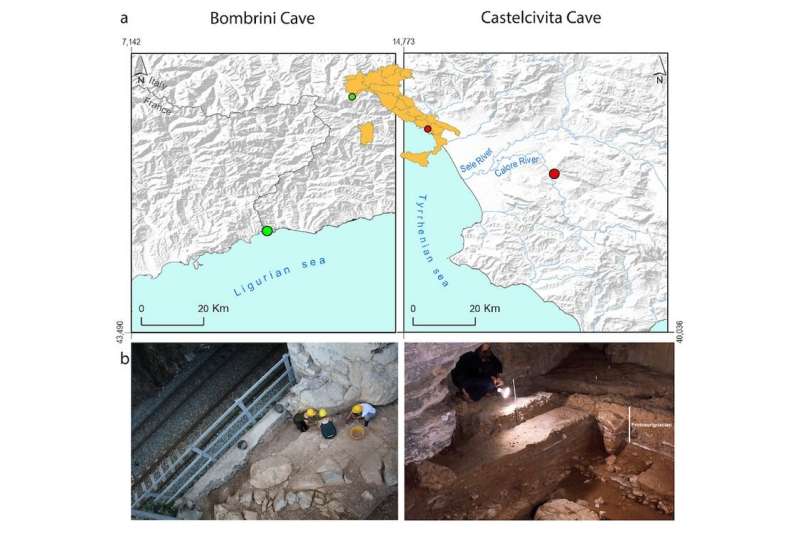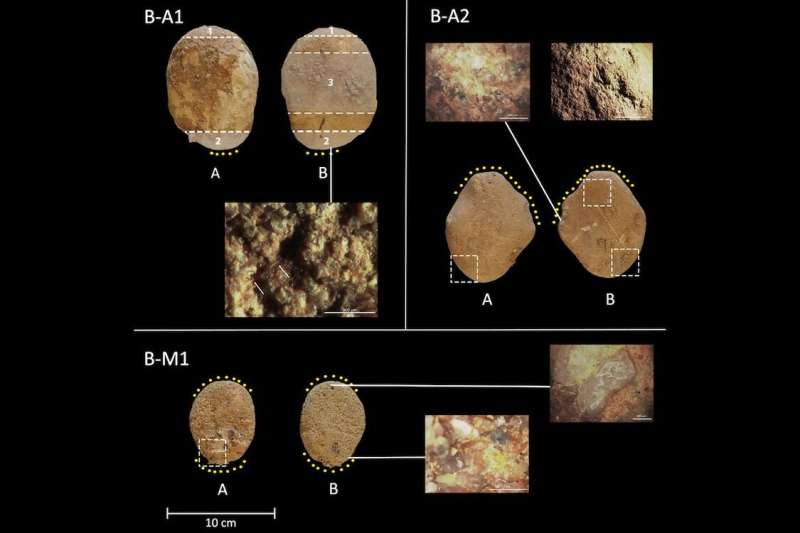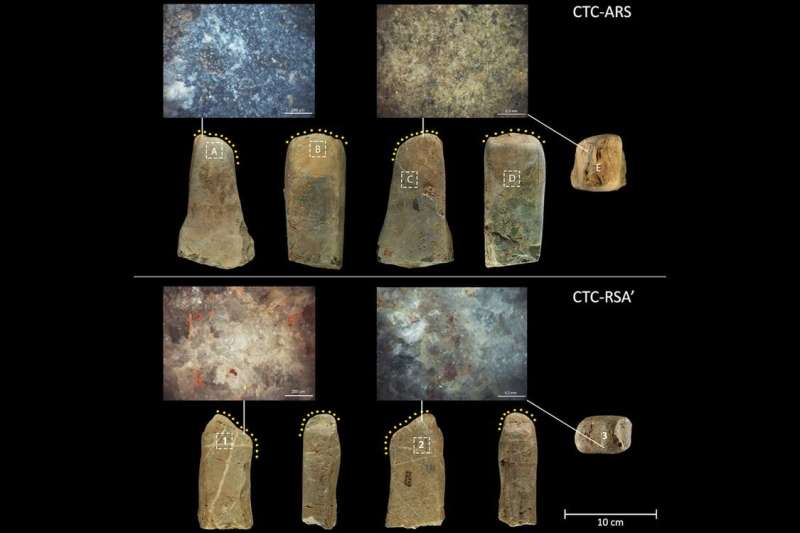This article has been reviewed according to Science X's editorial process and policies. Editors have highlighted the following attributes while ensuring the content's credibility:
fact-checked
peer-reviewed publication
trusted source
proofread
New evidence of plant food processing in Italy during Neanderthal-to-Homo sapiens period

Long before the invention of agriculture, humans already knew how to process cereals and other wild plants into a flour suitable for food—and now there's new evidence they did so long before scientists was previously thought.
Published in Quaternary Science Reviews, an Italian-led study of five ancient grindstones from around 39,000 to 43,000 years ago shows that milling for food dates back to the transitional period between Neanderthals and Homo sapiens.
"This pushes back by several thousand years the earliest evidence of plant processing and flour production," said study co-author Julien Riel-Salvatore, an Université de Montréal professor who chairs the anthropology department.
"One pestle from Riparo Bombrini, a site in northern Italy that I and my University of Genoa colleague Fabio Negrino have been working on for over 20 years, shows Neanderthals also engaged in this behavior, which is something completely new, to our knowledge. "So it's a pretty major discovery."
The Neanderthal-to-Homo sapiens period was characterized by the coexistence of the Late Mousterian (Neanderthal), Uluzzian and Protoaurignacian (H. sapiens) techno-complexes in the northwest and southwest of present-day Italy.
The grindstones come from two Paleolithic sites some 1,000 km apart on the Tyrrhenian Sea side of the peninsula: Riparo Bombrini, in the Balzi Rossi archaeological area of Liguria, and Grotta di Castelcivita, at the foot of the Alburni Massif, in Campania.

Starch granules with different morphologies were found on the surface of grindstones at both sites, testifying to the use of different plants, including wild cereals, by humans who inhabited the areas at that time.
Knowledge dissemination emphasized
Evidence of similar grinding practices in both contexts underlines how certain technological knowledge and eating habits were widespread in both populations, perhaps as a legacy already present within the two different cultural traditions or perhaps as a result of actual contact between the two groups.
The grindstone from the Mousterian levels of the Riparo Bombrini constitutes the oldest European examples of the processing and transformation of plant products in Europe and shows Neanderthals engaged in this practice. The two pestles from the Protoaurignacian levels at the site show modern humans who occupied the site less than a millennium later also engaged in the same behavior.

Two grindstones found at the base and roof of the Protoaurignacian sequence of the Castelcivita Cave not only have a similar morphology, but also present intentional modifications to make them more functional.
Coordinated by the Italian Institute of Prehistory and Protohistory within the framework of the PLUS_P (Plant Use in the Paleolithic) project, the study involved researchers from the Universities of Florence, Genoa, Ravenna and Bologna, as well as the Cyprus Institute (in Nicosia) and UdeM.
"Transforming cereals into flour is an important innovation because it allowed Paleolithic foragers to store and transport food more easily," said Riel-Salvatore. "Pushing this behavior this far back in time really changes how we think about how these highly mobile people lived."
More information: M. Mariotti Lippi et al, New evidence of plant food processing in Italy before 40ka, Quaternary Science Reviews (2023). DOI: 10.1016/j.quascirev.2023.108161
Journal information: Quaternary Science Reviews
Provided by University of Montreal





















